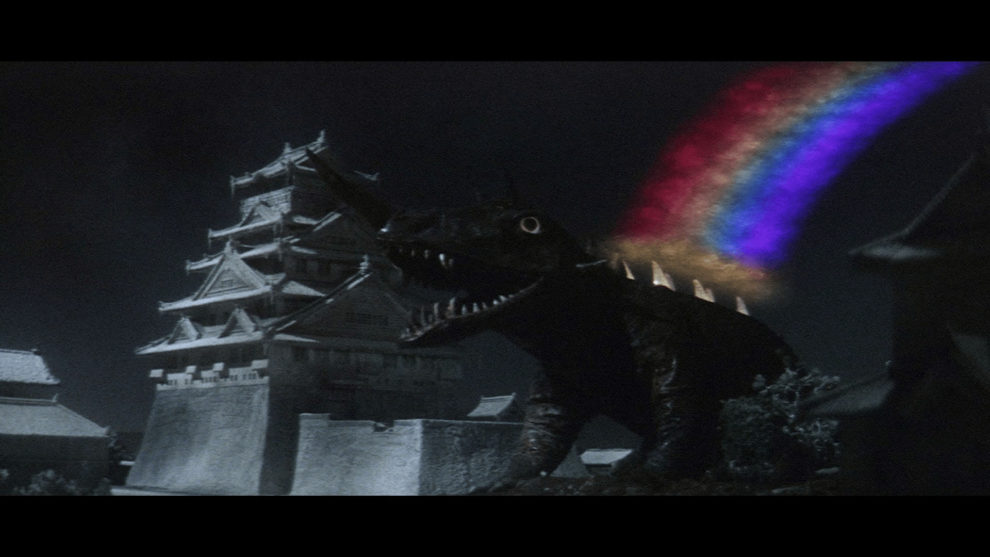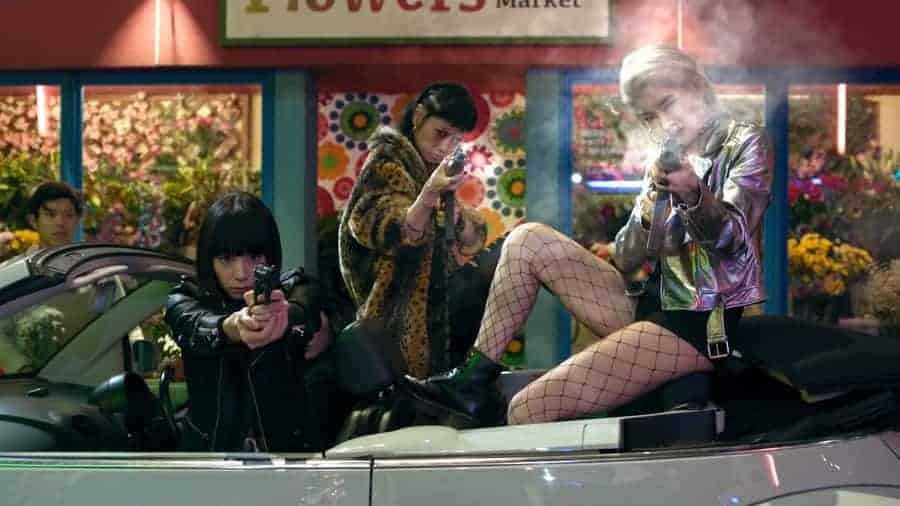After the huge commercial success of “Gamera, the Giant Monster” it was only a matter of time before Daei Film would continue their series of films featuring the giant creature which was originally meant as a way to compete with Toei Studios and their successful Godzilla-franchise. Even though directing duties went to experienced director Shigeo Tanaka, according to IMDB, Noriaki Yuasa, who helmed the first movie, is also mentioned as director for “Gamera vs. Barugon”, possibly due to the stock footage from the first used here. Another change is the switch from black-and-white to color as well as, considering the second film was granted a higher budget, more advanced special effects, which is especially relevant for the battle between the two monsters and the miniature effects throughout. Besides being a better movie with regard to technology, “Gamera vs. Barugon” tells a story about greed and how much chaos this character trait has caused in the world.
Buy This Title

Half a year after the world saw Gamera being shot to Mars, the creature returns to Earth due to the rocket colliding with a meteor, setting its course back to where it came from. However, after destroying Kurobe Dam, the giant monster disappears again in search for great sources of heat on the planet's surface.
Meanwhile, Keisuke Hirata (Kojiro Hongo) has other things on his mind then worrying about a giant monster, since he is about to engage in what will possibly be a quite lucrative adventure. According to his brother, who has been a POW in World War II, he has hidden a giant opal in a cave in New Guinea. As Keisuke, along with two other companions, arrive on the island, the natives try to stop the three men, telling them about a great curse connected to the cave which potentially could bring great evil upon the world. Ignoring the pleas of the natives, the trio manages to get to the cave and finds the opal, but Keisuke is betrayed by Onodera (Koji Fujiyama), who finally escapes with the precious stone and can escape to Kobe. However, as the ship he is on sinks, the stone is lost.
Then, just minutes after the ship sank, a giant monster, later named Barugon appears, which continues its way towards the city, destroying everything in its way and growing stronger every minute. As military firepower cannot stop the creature, whose icy breath freezes everything it touches, all hope lies in the appearance of Gamera, who might be able to fight and beat Barugon.
As with many other kaiju-films, with its second entry, the Gamera-franchise turned to the concept of the monster fight, which is already teased in the title. Somewhat ironically, it also points at the idea of Gamera standing on the side of humankind in some way, emphasizing the statement from the first film that the monster was not evil by nature, even though “Gamera, the Giant Monster” did nothing to confirm that assertion. Nevertheless, with slight improvements in the special effects department, the eventual fight between the two monsters is, given the time of production, quite well-made.
Interestingly, for the majority of the action, we follow the story of Keisuke, a narrative involving human greed, betrayal and the exploitation of others. While the story only comes back to these issues during its final moments, culminating in an overly didactic message which reminds us of the young target audience this film was supposedly meant for, scriptwriter Niisan Takahashi still manages to throw in quite a few interesting concepts. Perhaps the most significant and quite ironical is how the greediest character causes quite literally the birth of Barugon, due to his greed and ignorance.
In the end, “Gamera vs. Barugon” is a solid second entry into the franchise. Considering its improved special effects, the movie manages to entertain its target audience, even though its overly didactic messages in the finale feels unnecessary.















